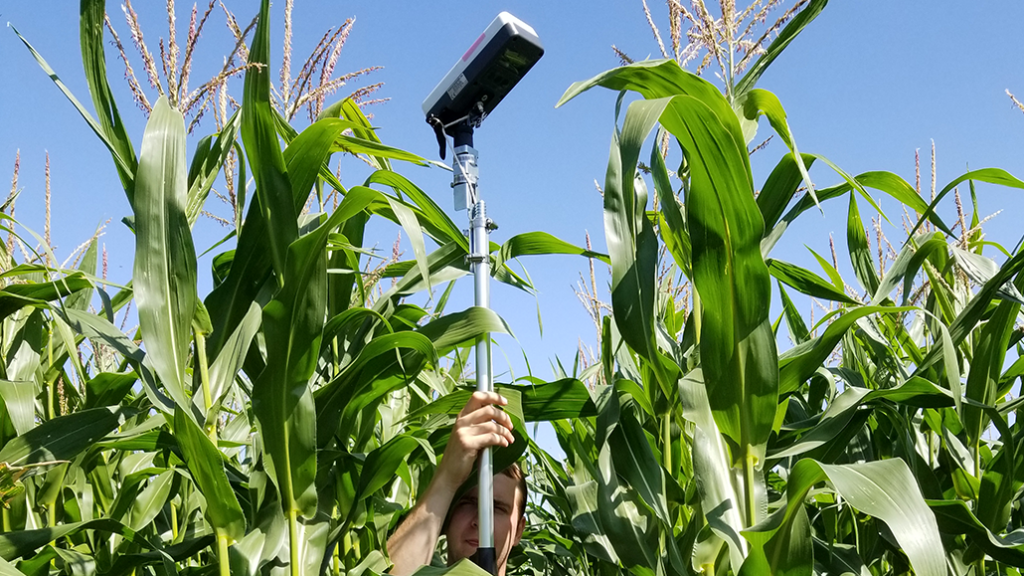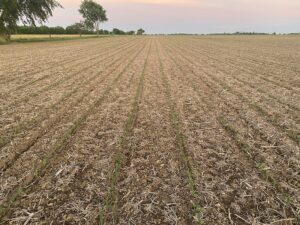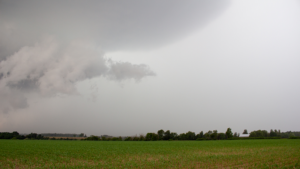4R grain corn
BENEFITS OF ADVANCED 4R NITROGEN MANAGEMENT

4R FERTILIZER MANAGEMENT (Right Source, Right Rate, Right Time and Right Place) is a well-known, well-respected and widely-implemented program in Ontario and across Canada.
It is also an evolving program, with new studies continually being conducted to help farmers refine their fertilizer practices with various crops. One recent study, supported by multiple stakeholders, including Grain Farmers of Ontario, analyzes the agronomic and environmental benefits of advanced 4R nitrogen management of grain corn. The study started in 2018 and involves sites across Ontario, Quebec, and Manitoba.
As the team explains, this research “meets an important need to increase the use efficiency of nitrogen fertilizers to hold or reduce nitrogen fertilizer rates in grain corn without decreasing yields.”
Led by Dr. Mario Tenuta, professor of Soil Ecology at the University of Manitoba and NSERC/WGRF/Fertilizer Canada Industrial Research Chair in 4R Nutrient Stewardship, the project includes Gaétan Parent, senior soil and agronomy specialist, and Curtis Cavers, agronomist, both with Agriculture and Agri-Food Canada (AAFC).
Specifically, the team asked what extra costs and/or greater profitability are associated with advanced 4R nitrogen management with grain corn and whether in-season nitrogen testing and rate adjustments should be included in advanced 4R practices. Four high-efficiency fertilizers were compared to liquid urea ammonium nitrate fertilizer at planting: ESN, SuperU, AgroTain, and AgroTain+. Here are some of the study highlights.
INJECTION VERSUS BROADCAST
Specifically in Ontario, Dr. Craig Drury (AAFC Harrow) compared single/double injection bands (combined with different depth placement and nitrogen sources) with broadcast applications regarding nitrogen losses and grain yield.
In the first year (2018) at the site in Woodslee, Ontario, broadcast surface application of urea and SuperU without incorporation gave lower yields than single and double slot injection of UAN, with or without AgroTain+. SuperU provided yields on par with the side-dressing of UAN at the highest rate.
In 2019, broadcast application of urea and SuperU outperformed injected UAN sources in terms of yield, and double-slot injection of UAN sources was better than single-slot. In 2020, yields were higher with an in-season application of UAN (either single or double slot injection) than with broadcast application at planting.
Looking at emissions, in 2020, AgroTain+ reduced N2O more for double slot than with single slot injections. For ammonia emissions, SuperU reduced these with broadcast application at planting, but single or double injection of UAN was even more effective.
In terms of application timing, in Manitoba trials, Cavers and Parent found that delaying split nitrogen applications (after V4 stage) did not improve corn yields compared to earlier split nitrogen applications. Cavers notes, however, that grain corn in Ontario may show a more positive response to later nitrogen application (V8 to V12) due to regional differences in climate and other factors, as was the case in the Quebec trials.
OPTIMAL APPLICATION RATE
Data from Near Infra-red Spectroscopy (NIRS) measurements of corn leaves did not help with nailing down an optimal nitrogen rate in this study, nor did using an additional tool called rapidscan cs-45.
Parent adds that “the use of diagnostic tools such as NIRS must also take into account plant physiology — for example, that nitrogen deficiency in corn appears on the lower leaves. It’s now clear that the lower part of the corn plants should be used for diagnosis. In addition, we carried out a small experiment using a Spad 502 chlorophyll reader, but we found it takes too much time to provide timely guidance on the nitrogen content of the plants for farmers. A diagnostic tool should be developed to better integrate plant physiology and N movement at the plant level.”
Indeed, the team calls for priority research into comparing portable NIRS devices with other mid-seasons crop nitrogen sensors such as Crop Circle or GreenSeeker to better provide rapid nitrogen recommendations to farmers and agronomists based on the original and proven Nitrogen Nutrition Index (NNI) concept.
NATIONAL MODEL
However, the team found that an optimal nitrogen application rate for grain corn can be determined using modelling at the V8 stage. V8 seems to be an optimal stage, says Parent, mainly due to the fact that various soil and plant parameters are quite stable at this plant age.
The model incorporates many parameters, ranging from precipitation, light, soil pH, soil phosphorus, potassium, calcium, and aluminum content to corn plant nitrogen, corn aerial biomass, and soil carbon and sand.
“Modelling was done by combining the data of this study with those of other projects currently underway,” says Parent. “We also found that this relationship is valid even when combining contrasting data from sites located in both Manitoba and Quebec, thus potentially presenting a predictive model for all of Canada.” The model is currently being validated at AAFC Quebec Research and Development Centre.
Overall, Parent and his colleagues are not very surprised that modelling analysis using traditional data (related to soil, climate and plants) is more effective than using NIRS and light reflectance when predicting the optimum nitrogen rate.
“We frequently realize that a single parameter, be it NNI, soil nitrate content, or reflectance at a certain wavelength of foliage, rarely, if ever, directly determines the optimal nitrogen rate in corn production,” he says. “We’ve shown that a multitude of parameters must be used simultaneously. This is supported by a study conducted in Sweden where the team found that the factors that maximize crop yields are multifactorial and comprise soil phosphorus concentration, soil PH, calcium, magnesium, and other vital elements.”
LOOKING FORWARD
Cavers reiterates that while there is no silver bullet for corn growers in Ontario and across Canada to better practice 4R fertilizer management, maximizing yields while minimizing losses of nitrogen to the environment is an attainable goal.
“This requires good weed control, adequate soil testing, appropriate use of 4R practices, testing new prediction models as they become available, and so on,” he says. “Analysis of the crop canopy may be quite useful in many situations, but it will require more testing to be a reliable tool for farmer decision-making.”
Funding for this project is provided by the Agriculture and Agri-Food Canada AgriScience Program through the Canadian Agricultural Partnership, with support from the Canadian Field Crop Research Alliance (CFCRA), whose members include: Atlantic Grains Council; Producteurs de grains du Quebec; Grain Farmers of Ontario; Manitoba Corn Growers Association and FP Genetics. Additional industry funding is provided by the Canadian fertilizer industry. •

























